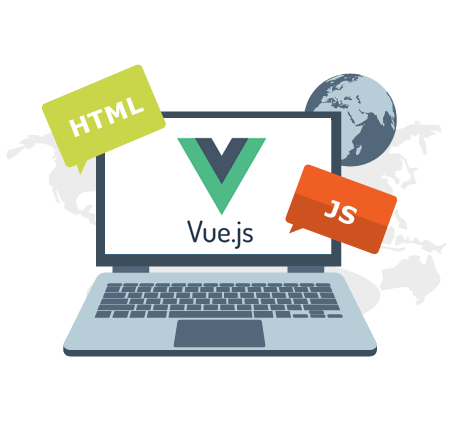Insightful Bytes
Exploring the world one byte at a time.
Vue.js: Where Components and Chaos Collide
Dive into the thrilling world of Vue.js where components collide with chaos! Uncover secrets to mastering this dynamic framework today!
Understanding the Vue.js Component Lifecycle: From Creation to Destruction
Understanding the Vue.js component lifecycle is essential for any developer looking to maximize the efficiency and performance of their applications. The lifecycle of a Vue.js component can be divided into several stages: Creation, Mounting, Updating, and Destruction. During the creation phase, Vue initializes the component, setting up its data, props, and computed properties. This is followed by mounting, where the component is rendered and inserted into the DOM, making it visible to users. Knowing how these phases work allows developers to utilize lifecycle hooks effectively, enabling them to perform actions at specific stages of a component’s lifecycle.
After the mounting phase, a component can go through multiple update cycles whenever its data changes. This involves processes like re-rendering and re-evaluating computed properties. Developers can tap into lifecycle hooks such as updated() to respond to changes accordingly. Finally, the lifecycle concludes with the destruction phase, during which Vue removes the component from the DOM and cleans up any resources. Understanding when and how these lifecycle hooks are triggered provides a powerful toolkit for managing component behavior, allowing for optimized performance and resource management in your Vue.js applications.

Top 5 Challenges When Working with Vue.js Components and How to Overcome Them
When working with Vue.js components, developers often face a range of challenges that can impede their progress. One of the most significant issues is component communication. Managing data flow between parent and child components can become complex, especially in larger applications. To overcome this, developers can make use of Vuex, the state management library for Vue.js, or employ simpler event bus strategies to facilitate smooth communication. Another challenge is performance issues, which can arise from inefficient reactivity. Developers should consider using the v-once directive for static content or optimizing computed properties to enhance performance and ensure seamless user experiences.
Additionally, understanding the lifecycle hooks in Vue.js can be daunting for new developers, leading to improper initialization and rendering issues. To tackle this, a comprehensive grasp of each lifecycle stage is essential, enabling developers to best utilize the lifecycle hooks for their components. Another significant challenge is the testing of components. Writing tests can become cumbersome without a proper structure in place. To mitigate this issue, utilizing tools like Jest or Vue Test Utils can streamline the testing process, ensuring that components are rigorously tested for reliability. Lastly, staying updated with rapid Vue.js developments is crucial. Regularly following official documentation and community resources can help developers keep pace with best practices and new features, ultimately leading to a smoother development experience.
How to Organize Your Vue.js Project for Maximum Clarity Amidst Complexity
Organizing your Vue.js project effectively is crucial for maintaining clarity, especially as your application grows in complexity. One of the first steps is to create a well-structured file hierarchy that separates concerns. Consider using a modular approach where components, views, and assets are organized into dedicated folders. For example:
- src/components - For reusable components.
- src/views - For page-level components.
- src/store - For Vuex store files.
- src/router - For routing configurations.
- src/assets - For images, styles, and other static files.
Additionally, utilizing naming conventions and consistent coding styles can greatly enhance the readability of your code. Adopting a Vue.js style guide will help your team communicate effectively and streamline development processes. Consider implementing a linter to automate style checking and enforce quality control. Finally, document your project's architecture and the rationale behind your organization choices. A well-documented project not only supports current developers but also serves as a useful resource for future contributors, ensuring that clarity is maintained amid complexity.